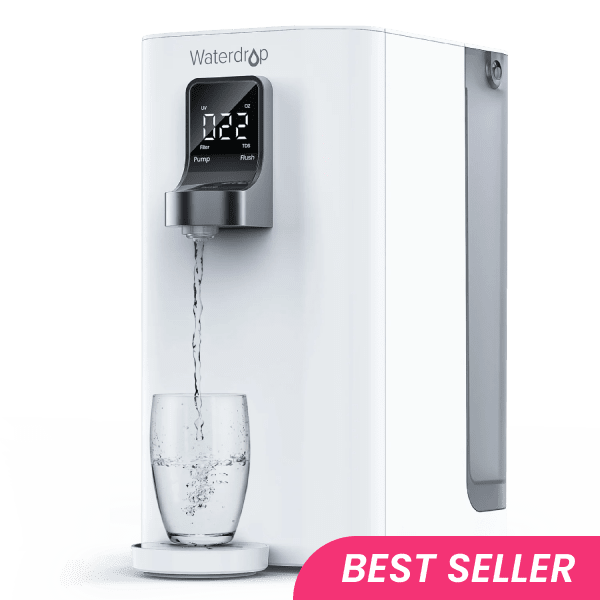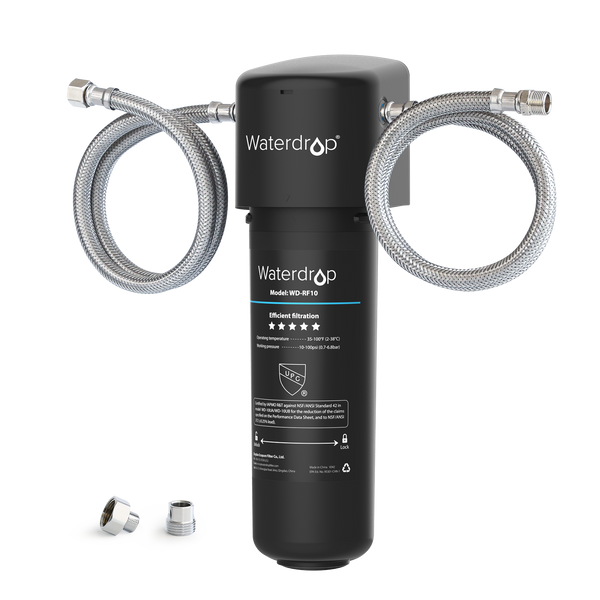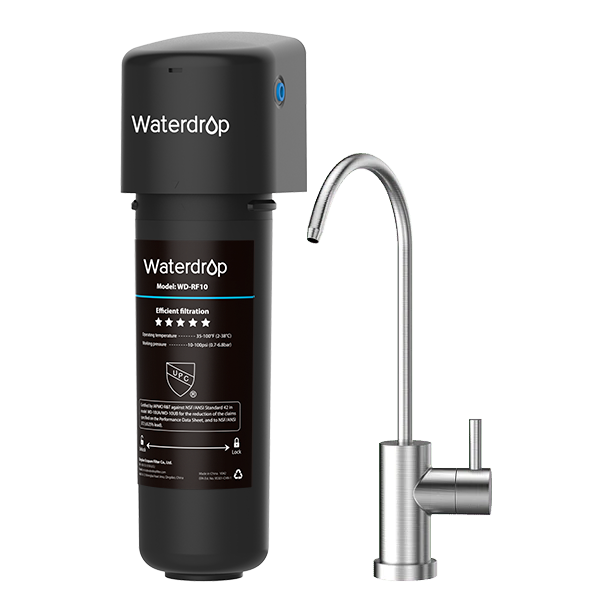Bottled Water Dispensers vs. Tankless RO Water Filtration Systems: Which Is Better?
by Dr. Jonathan Doyle - Updated June 02, 2023
Increasingly, Americans seek safe and reliable water sources for personal and household consumption, surpassing mere water availability. Two commonly considered options are bottled water dispensers and reverse osmosis water filtration systems. However, with each American using up an average of about 82 gallons of water daily at home, choosing correctly between these water sources is imperative.
Still undecided between a bottled water dispenser and a reverse osmosis water filtration system for your home? This blog is for you. Read on to learn which is better between both water sources.
What Is A Bottled Water Dispenser?
Bottled water dispensers are common features in homes, offices, and other public areas, where they serve as a source of drinking water. These devices are designed to dispense water from large water bottles, usually made of glass or plastic. They comprise a bottle support, which holds the water bottle uprightly and securely, a faucet through which the water is dispensed, and the drip tray below the faucet to collect any spills or drips.
An average bottled water dispenser for home is easy to set up and use. Once the bottle is installed, users can activate the water flow by pressing a dedicated button or turning a knob. This, in turn, opens the faucet, and the water from the bottle comes out into any suitable container placed below it.
What Is A Tankless Reverse Osmosis Water Filtration System?
A tankless reverse osmosis (RO) water filtration system is designed to purify water using the process of reverse osmosis. It efficiently removes impurities from water, providing users with clean, healthy, and great-tasting drinking water. Unlike the traditional RO systems with a dedicated tank for water storage, these tankless versions are made for instant filtration.
The process of filtration entails a pre-filtration stage, where the main water enters into the tankless RO system, followed by the reverse osmosis process, where the RO membrane separates the impurities from the pure water, and finally, the post-filtration process, where taste and quality are refined for immediate delivery.
The absence of storage tanks makes these filtration systems more efficient and compact. They are typically found in residential settings, especially in places where the quality of water is poor, and the space is limited.
Why Choose Tankless RO Water Filtration Systems Over Bottled Water Dispensers?
This section compares the tankless reverse osmosis water filter and the bottled water dispenser for home based on essential points like cost, water quality, environmental impact, etc.
Which offers more quality water?
Tankless reverse osmosis water filters offer exceptional water quality assurance. These filtration units adopt the reverse osmosis process to effectively reduce a wide range of contaminants in water, thus providing users with consistently high-quality drinking water. In addition, the systems are effective against contaminants like lead found in older pipes or plumbing systems, arsenic, fluoride, virus, bacteria, and other harmful substances. This additional layer of protection is essential in areas where these contaminants are a concern.
Conversely, bottled water varies in quality depending on the manufacturers. There is also the risk of possible contamination during the process of production, storage, or transportation. All of these are eliminated when you choose a tankless RO system. There are almost no risks associated with external factors, and you can rest assured of a consistent supply of purified water.
Which offers more life assurance?
Continuous access to purified water directly from the tap or dedicated faucet means you do not have to worry about running out of water or stocking up on bottled water. While bottled water dispensers require constant monitoring and replenishment to guarantee a steady supply, the tankless reverse osmosis water filters only need a one-time connection for a stable long-term supply.
During natural disasters, such as floods, a tankless RO water filter ensures that the quality of your household water remains uncontaminated. In contrast, bottled water often runs out of stock during such events, leaving households without a reliable source of water in terms of both quantity and quality.
Additionally, plastic bottles used for storing and transporting bottled water may contain harmful chemicals that can leach into the water inside. By choosing a tankless RO water filter, you eliminate these concerns, as the filtered water is overall cleaner and healthier.
Therefore, in terms of life assurance, a tankless RO water filter offers superior protection and peace of mind compared to a bottled water dispenser.
Which is more affordable?
The average family in America spends more than $1,000 per year on water costs. The only way to reduce this is to choose a water source that costs less, especially in the long run. Initial cost computation may suggest that tankless RO systems are more expensive. Yes, this is true, but only for the upfront cost. Comparing the total purchase cost of both options will show that the RO systems are more cost-effective and can help save more in the long run.
Bottled water expenses rise over time with the dispensers, especially for homes that require large amounts of drinking water. In contrast, with a tankless system, you only have to pay upfront for installation and minimal cost for occasional filter replacements, making it a more economical option over time.
Another consideration here is the beneficial features like indicators and sensors in tankless reverse osmosis water filtration systems that help to monitor filter life and system performance. These allow you to optimize filter replacements and minimize unnecessary costs.
Which impacts the environment more?
The impact of tankless RO water filtration systems on the environment is low compared to bottled water dispensers. Tankless RO systems do not use bottled water and, by extension, its transportation and packaging. On the other hand, bottled water dispensers are designed to rely on bottled water. An integral component of the bottled water production process is the use of plastic. Therefore, bottled water consumption increases plastic waste, energy consumption, and carbon emissions. With more plastic bottles ending up in landfills, reducing their use can help reduce environmental pollution.
Which requires more storage space?
With bottled water dispensers, you require space not only for storing the water bottles but also for accommodating the dispenser itself. This is because you store both unused/filled and used/filled water bottles—a major challenge for people with a small kitchen area or a small indoor space and those with mobility limitations.
On the other hand, tankless RO water filter systems are space-efficient and require no dedicated storage space. You only need to install it under the sink or in a small cabinet and enjoy clean drinking water on request from the dedicated faucet that is visible on the countertop. This ensures you use your countertop space more efficiently without disrupting your kitchen interior.
To Round up…
In summary, while users can enjoy some convenience with bottled water dispensers, tankless RO water filtration systems perform better regarding water quality, environmental impact, cost-effectiveness, and convenience in use. They are also space-saving and resonate more with modern interior designs.
Additionally, the water purification process in tankless RO systems is more efficient, and there are several customizable filtration options. When you choose a tankless RO water filter system, you enjoy the advantages of instant purified drinking water without the drawbacks associated with bottled water dispensers.
Finally, the pros and cons discussed in this blog can vary slightly, depending on the specific brands and models of tankless RO systems and bottled water dispensers being compared. We recommend comprehensive research and comparison of different options to choose the option that best meets your needs.
Recommended Reading:
Contaminants Detected in Fruitland Water Special Service District
30
Contaminants
EXCEED EWG HEALTH GUIDELINES
EXCEED EWG HEALTH GUIDELINES
30 Total Contaminants in Your Water
Water Provider
Fruitland Water Special Service DistrictPopulation Affected
120,000Water Source
Ground waterExceeds Guidelines
Others Detected















